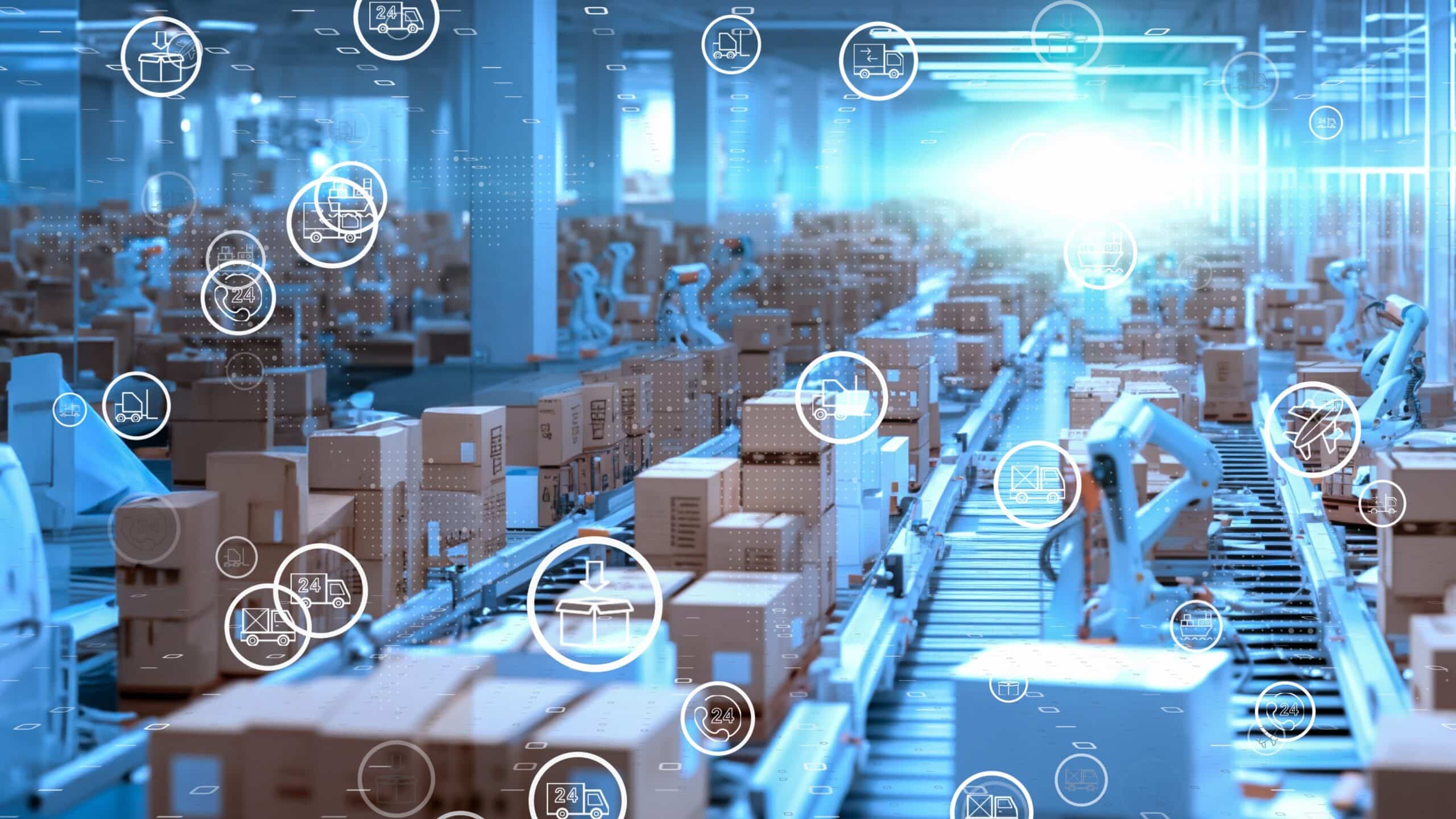Artificial intelligence (AI) is transforming the way supply chains operate. From anticipating disruptions before they happen to adjusting orders in real time, AI-powered tools and technologies have emerged as a powerful part of autonomous supply chain decision-making.
As global markets become increasingly volatile and customer expectations skyrocket, supply chain organizations are turning to AI to gain speed, precision, and resilience. From predictive analytics to advanced inventory analysis, AI overhauls how decisions are made across the supply chain.
This transformation is still ongoing and raises critical questions. How can organizations best use autonomous supply chain technologies? What will the future of supply chains look like? Will AI eventually take the lead in decision-making?
Current Role of AI in Supply Chains
AI is already playing a big role in the supply chain, acting as a powerful asset to enhance visibility, improve forecasting accuracy, and streamline decision-making. While we’re not currently in a state of fully autonomous supply chains, AI is firmly embedded in many core supply chain functions today. For example, data shows that top supply chain organizations use AI to optimize processes at more than twice the rate of low-performing peers. Meanwhile, further research shows that in the next three years, 25% of KPI reporting will be powered by GenAI models, and smart robots will outnumber frontline workers in manufacturing, retail, and logistics.
Here are some of the most impactful ways AI is currently being used in supply chain operations:
- Demand Forecasting: AI-driven algorithms analyze historical sales data, market trends, and other external factors to generate highly accurate demand forecasts.
- Inventory Optimization: AI systems help maintain optimal inventory levels by predicting reorder points, identifying slow-moving stock, and automating replenishment.
- Logistics Planning: In transportation and logistics, AI enhances route optimization by accounting for traffic patterns, fuel costs, delivery windows, and weather conditions.
- Risk Management: AI can monitor and assess supply chain risks in real time, such as supplier instability, raw materials shortages, and political disruptions.
- Maintenance: Through algorithms and sensor data, predictive maintenance models can forecast failures before they occur and reduce downtime.
The Benefits of AI-Led Decision-Making
Integrating AI into autonomous supply chain decision-making offers companies a significant strategic advantage. By shifting from manual, reactive processes to AI-driven, proactive systems, organizations can unlock benefits like:
- Speed and Efficiency: AI processes vast amounts of data in real time, enabling rapid decision-making that humans cannot match. Whether recalculating delivery routes due to a traffic jam or rebalancing inventory across warehouses, AI instantly saves time and resources.
- Enhanced Accuracy: AI models are highly accurate and remove the element of human error. This reduces costly mistakes in areas like forecasting, planning, and execution.
- Improved Agility: AI allows supply chains to be more nimble and adaptive to change. With predictive analytics and scenario planning, companies can anticipate disruptions and take the best action.
- Cost Savings: AI helps reduce operational costs by optimizing everything from procurement to logistics. For example, smarter forecasting leads to lower inventory holding costs.
- Optimized Resource Allocation: With AI handling routine and data-intensive decisions, human teams can focus on tasks like strategy, innovation, and relationship management.
By leveraging AI for decision-making, supply chains become faster, cheaper, and smarter.
The Challenges of Autonomous Decision-Making
While autonomous supply chain decision-making benefits are substantial, achieving it comes with significant hurdles. They might include:
1. Data Quality and Integration
AI is only as effective as the data it receives. Many supply chains still operate with siloed systems, inconsistent data formats, and outdated technological infrastructure. This can lead to flawed AI insights and decisions.
2. Lack of Transparency
A big concern with autonomous supply chains is transparency into how and why decisions are made. A lack of explanation makes it difficult for supply chain leaders to validate decisions, meet compliance requirements, and justify actions to stakeholders.
3. Ethical Concerns
Autonomous systems have the potential to make decisions that are optimal from a data standpoint, but which conflict with ethical considerations or regulatory needs. For instance, AI might favor a cost-effective supplier with questionable ethical labor practices.
4. Organizational Resistance
Implementing AI demands cultural change within organizations. Employees might fear job displacement, lack necessary skills, or be slow to change their processes. Without clear communication and proper training, adoption can stall or fail.
5. Loss of Human Expertise
As AI takes on more responsibility, there’s a risk that organizations become too dependent on it, and humans start losing their expertise. Then, if systems fail or encounter new scenarios outside their training data, human decision-makers may be unprepared to intervene.
Autonomous supply chain decision-making holds tremendous potential, but it has its pitfalls. To move forward safely and effectively, companies must invest in robust data infrastructure, establish governance frameworks, and leverage human expertise.
Effective Human-AI Collaboration
While the future of autonomous supply chains remains to be seen, the most effective models today don’t eliminate human involvement—they elevate it. Rather than a choice between human and machine, the future of AI-powered supply chains lies in collaborative intelligence.
How exactly? First, AI systems should augment and support human decision-making, not replace it. AI excels at processing large datasets, recognizing patterns, and making rapid recommendations. Meanwhile, humans bring contextual understanding, ethical judgement, and strategic insight to the table. When paired together, AI becomes a valued co-pilot, enhancing decision quality while humans remain in control.
Next, organizations should use Human-in-the-Loop (HITL) systems for real-time oversight and intervention. These frameworks are especially valuable in high-stakes scenarios like navigating compliance, responding to crises, and handling customer escalations. HITL models ensure accountability and maintain confidence among stakeholders.
Additionally, companies need to invest in their systems and upskill their workforce to foster effective human-AI collaboration. This might include deploying new inventory software and training employees to work with AI tools. Empowering people (rather than replacing them) is key to long-term AI adoption and success.
AI doesn’t take the wheel in a truly intelligent autonomous supply chain – it helps navigate. By designing supply chain systems where humans and machines collaborate effectively, organizations can harness the best of both worlds – machine precision and human perspective.
Prepare for an Autonomous Future with StockIQ
The future of supply chains is autonomous and AI-driven. If you’re ready to improve how your business handles supply chain planning while harnessing the power of AI, we should talk.
We’re StockIQ, a supply chain planning suite built for businesses like yours that leverages cutting-edge technologies. Our user-friendly system lets you control inventory, simplify ordering, and improve forecasting, with AI-powered tools and sophisticated machine learning algorithms.
Are you interested in seeing how StockIQ can help you achieve an autonomous supply chain? Contact us today or request a StockIQ demo.

